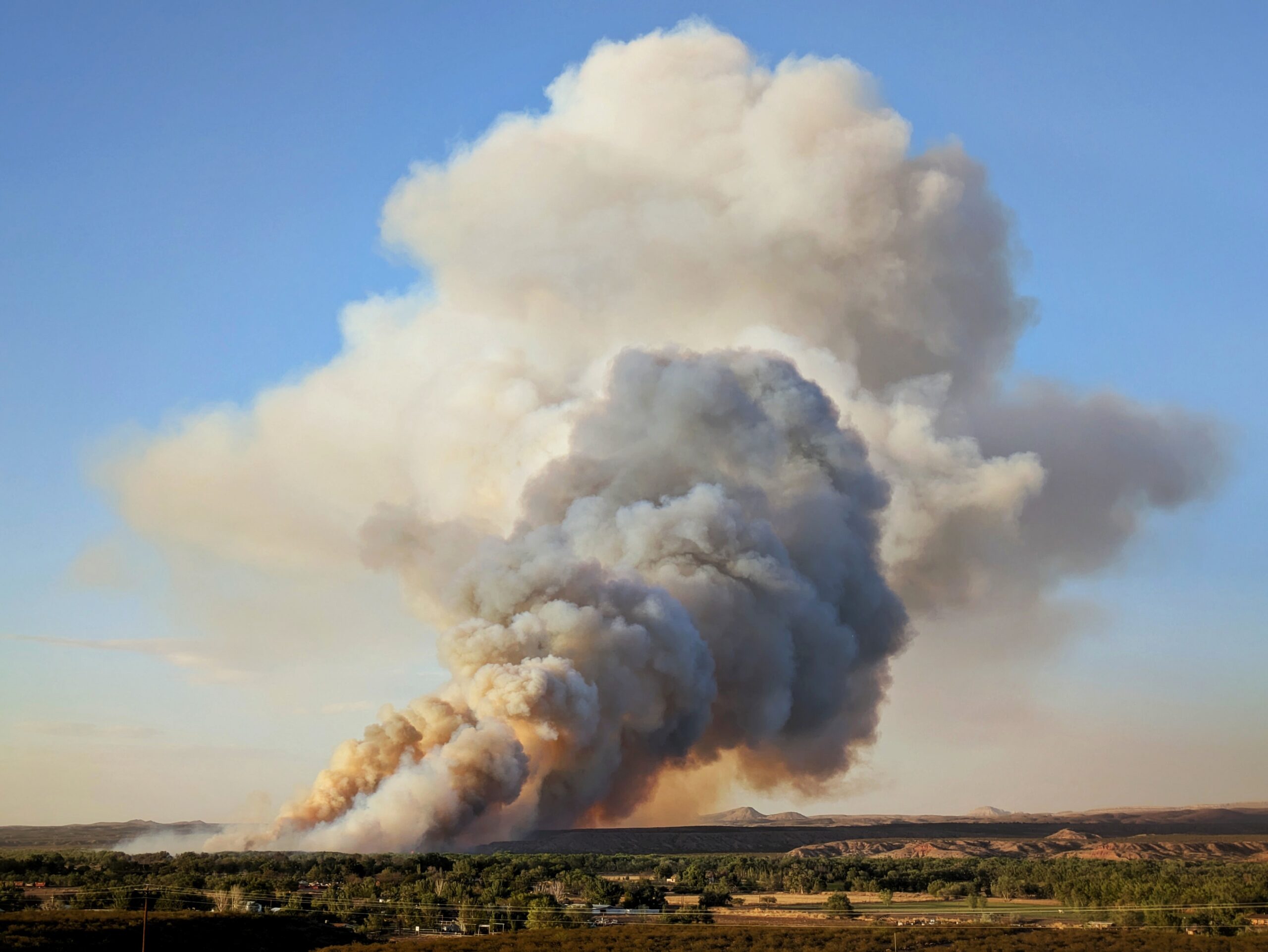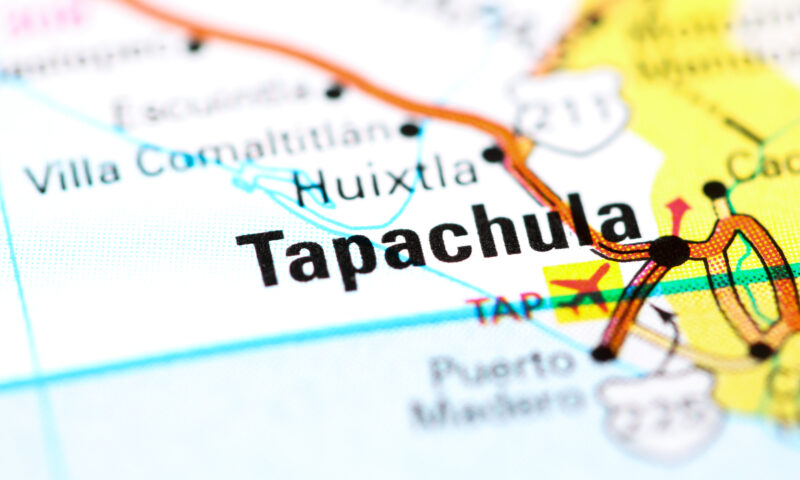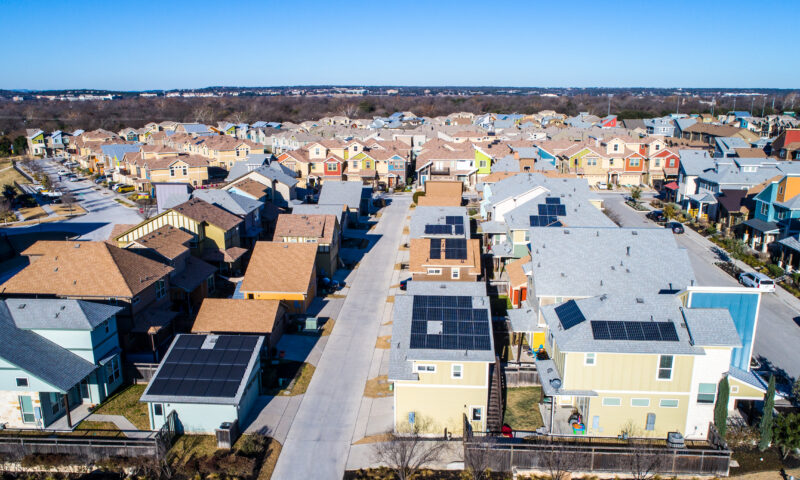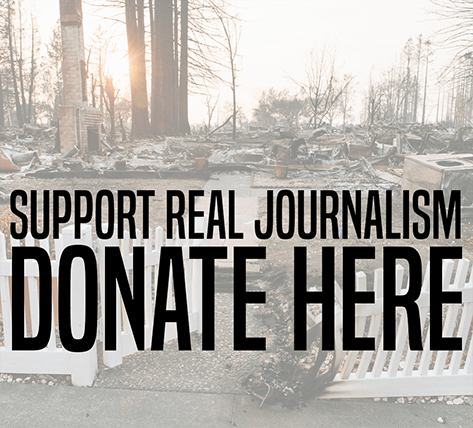In late May, Gov. Michelle Lujan Grisham’s office sent out a press release announcing an executive order that declared a drought emergency and state of emergency in New Mexico. The order itself was missing two things: It didn’t actually include an emergency declaration, and it didn’t say why the state was in the midst of the worst drought conditions in recorded history.
Lujan Grisham’s order did urge local governments to consider “appropriate” firework bans. It also told the New Mexico Drought Task Force to meet and make “near-term action recommendations no later than July 31” — more than two months after the executive order was signed, and deep into fire season.
(Lauren Dodd Thorp, communications assistant to the governor, said that while the order “does not specifically use the terms ‘drought emergency’ or ‘state of emergency,’ it does function as an emergency declaration under the Governor’s authority.”)
The order didn’t say what is making the drought as bad as it is, but scientists in New Mexico have. “Climate change is making things worse,” said Dave DuBois, New Mexico’s state climatologist.
The warming climate doesn’t cause droughts, but it does increase the likelihood that they become longer, hotter and more intense, exactly what New Mexico is experiencing.
Tree ring studies infer historical periods of drought and abundant rain via ring thickness. In New Mexico they show that “the current drought has been one of the most intense we’ve seen in hundreds of years,” DuBois said. “The overall trend is heading toward a warmer climate … There is nothing to show us that trend is going to change a lot.”
In fact, there is “a mountain of evidence” that the warming and drought is caused by humanity’s greenhouse gas emissions, said David Gutzler, professor emeritus of climate science at the University of New Mexico. And those emissions come from burning fossil fuels like oil and natural gas.
“There is no other plausible explanation,” he said, “And the evidence keeps getting stronger and stronger.”
“There is very little appetite in policymaking that has any kind of regulatory effect on the oil and gas industry.”
~ Lucas Herndon, energy policy director, ProgressNow New Mexico
That evidence puts New Mexico in a tight spot. Among the nation’s states, only Texas produces more oil, and only a few produce more natural gas, depending on the week.
The irony for New Mexico is that those fossil fuels heating the atmosphere also fund more than a third of the state’s general budget and all that entails: a third of school spending; a third of road building; and a third of the effort to mitigate ever-increasing drought and fire seasons.
New Mexico doesn’t spend very much, though, on containing the industry that funds budgets and warms the atmosphere.
“There is very little appetite in policymaking that has any kind of regulatory effect on the oil and gas industry,” said Lucas Herndon, energy policy director at ProgressNow New Mexico.
He said his group recently reviewed every legislative session since Lujan Grisham took office in 2019 and found that no major oil and gas legislation made it to a floor vote in the state Legislature in that time.
He said oil and gas companies “have successfully killed any real attempt at any comprehensive reform of their industry” in New Mexico. That includes legislation in the past session that tried to codify Lujan Grisham’s much-touted methane regulations, which she often points to as an environmental win.
Methane is the main component of natural gas and it is a potent greenhouse gas, with more than 80 times the warming potential of carbon dioxide. Beginning in 2021, oil and gas producers are required to reduce natural gas leaks and emissions to less than 2% of production by the end of 2026. In addition, starting in 2022, they also have had to reduce releases of other volatile organic compounds — like benzene, toluene and hexane — that form the building blocks of toxic ozone pollution.
New Mexico’s methane emissions appear to have dropped since the rules were implemented, but rules do not have the long-term durability of law, and in the past four years the state’s Democrat-controlled Legislature hasn’t made them so.
In New Mexico, leaks and emissions from the oil and gas production process are the largest source of greenhouse gas emissions.
Herndon said that industry has maintained its perfect record of preventing regulatory legislation with a flood of money that crested this year. His group just tallied all lobbying dollars spent in New Mexico in this year’s legislative session and found that 54% was spent by the oil and gas industry.
“That’s an incredible amount,” he said.
The industry is also biggest when it comes to the state’s greenhouse gas emissions. Across the country as a whole, transportation is the largest overall greenhouse gas emitting sector, followed by electricity generation. But in New Mexico, leaks and emissions from the oil and gas production process top the list. It’s a rare distinction the state shares with Alaska.
Coincidentally, Lujan Grisham was at the Fourth Annual Alaska Sustainable Energy Conference in Anchorage last week. In a press release she noted the state’s hydrogen and geothermal energy developments and also said, “New Mexico produces some of the cleanest liquefied natural gas in the world, thanks in large part to our nation-leading methane emission standards.” The state does have some of the country’s strongest methane standards, but claims of “clean” liquified natural gas are debated.
She planned to discuss federal partnerships for New Mexico’s “advanced energy initiatives” with Energy Secretary Chris Wright, EPA Administrator Lee Zeldin and Interior Secretary Doug Burgum.
The partnerships may prove difficult. Just two years ago, Wright said, “There is no climate crisis and we’re not in the midst of an energy transition either.” Zeldin, on his first day in office at the EPA, said, “We are driving a dagger straight into the heart of the climate change religion.” And Burghum, on his first day in office, said, “Interior will focus on ways to eliminate harmful, coercive climate policies.” Since taking office, all three have promised to roll back federal oil and gas production regulations.
Lujan Grisham traveled to Alaska with Rob Black, recently appointed secretary of the New Mexico Economic Development Department. Previously, Black spent six years as the president of the New Mexico Chamber of Commerce, where he regularly testified on behalf of the state’s oil and gas industry at the New Mexico Legislature.
The governor’s office did not respond to questions about the trip by publication time.
* * *
Meanwhile, others in the state are preparing for future fires.
Laura McCarthy, New Mexico’s state forester, said, “We’re looking at above significant fire danger, particularly in the southwest/south central regions of the state.” She said that includes the state’s two biggest metro areas, Albuquerque and Las Cruces, and two areas that have already been walloped by years of drought-fueled fires, the Gila and Lincoln national forests.
“This risk comes from the persistent drought the state faces, low precipitation over last winter and mistakes that people make,” she said. Those mistakes aren’t directly related to oil and gas policy. “The data tells us that the majority of our fires are caused not by malicious behavior but by folks making mistakes when they’re outside on a windy day,” she said. The higher temperatures from global warming fan the flames of those mistakes.
“I worry about those forests burning. And the sad part is that the data analyst part of me understands that those forests will burn.”
~ David Gutzler, professor emeritus of climate science, University of New Mexico
The danger continues despite recent rains across the state. “Certainly, we love to see rain any time, but this year it is not a silver bullet to alleviate fire danger,” McCarthy said. In fact, it may well increase fire danger later this summer, because rain “allows for faster green-up of flashy fuels like grasses that can burn very fast and move a fire quickly in a high-wind situation,” she said.
Gutzler, the University of New Mexico climate scientist, said storms that suddenly dump huge amounts of rain are actually a signal of the warming climate. “As the climate warms up in general, the potential for extreme precipitation goes up,” he said. The science is complicated, but in rough terms, as air warms it can hold more water, leading to “tremendous dumps that exceed what we’ve seen historically.”
“I do not expect every year to look as dire as this year,” he continued, but this won’t be the last dire drought year.
Gutzler said, “In the short term … we must adapt.”
He lives north of Albuquerque, about a mile from the Rio Grande, which bisects the state from north to south. Gutzler said usually it is “a full, freely flowing river this time of the year.” But this year he and his wife hiked along its banks on Memorial Day, “and it’s not a high flowing river, for sure. So that’s troubling.”
Looking up at the neighboring Sandia Mountains from the trail, “I worry about those forests burning. And the sad part is that the data analyst part of me understands that those forests will burn,” he said. “Our forests are at a dire risk. That is part of climate change. That is daunting to think about.
“So the hopeful part of me [thinks] people have dealt with droughts forever here, and have muddled through them. And I’m reasonably confident we can muddle through this one,” Gutzler said.
“Having said that, I don’t expect a return anytime soon to the wet decades of the end of the 20th century,” Gutzler said. “We need to be careful.”
Copyright 2025 Capital & Main


 Column - State of InequalityNovember 6, 2025
Column - State of InequalityNovember 6, 2025
 StrandedNovember 7, 2025
StrandedNovember 7, 2025
 The SlickNovember 14, 2025
The SlickNovember 14, 2025
 Latest NewsNovember 11, 2025
Latest NewsNovember 11, 2025
 The SlickNovember 12, 2025
The SlickNovember 12, 2025
 Column - State of InequalityNovember 13, 2025
Column - State of InequalityNovember 13, 2025
 Latest NewsNovember 19, 2025
Latest NewsNovember 19, 2025
 Latest NewsNovember 18, 2025
Latest NewsNovember 18, 2025

